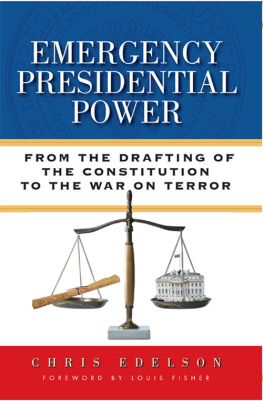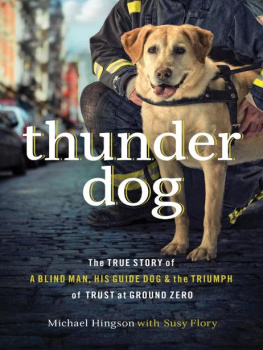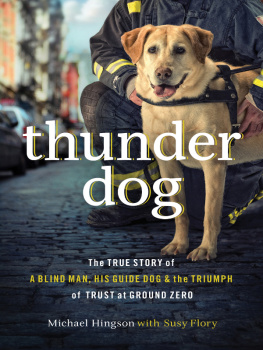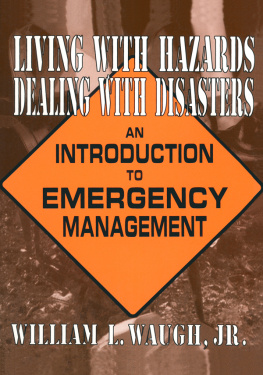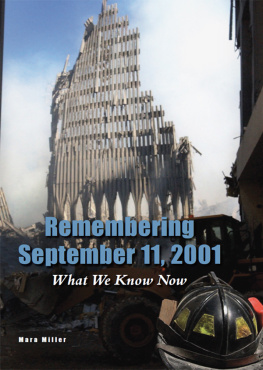
LISA M. HOMAN
SERGEANT MAJOR
74D5RJ5
HQSTARC, NJARNG
11 SEPTEMBER 2001, NCOIC, NJ EMERGENCY OPERATIONS CENTER, TERRORIST INCIDENT AT WORLD TRADE CENTER, NYC
24 SEPTEMBER 2007
TABLE OF CONTENTS
Contents
SGM LISA M. HOMAN
My personal experience paper will be about my assignment as the New Jersey Army National Guard Emergency Operations (EOC) NCOIC at Fort Dix on 11 September 2001. I have many experiences in the field of state emergencies that range from floods to winter storms. This was my first terrorist event (although the U.S. has experienced home grown man-made disasters before).
My assignment during this experience is with the Joint Force Headquarters New Jersey Army National Guard (NJARNG). I was the Operations/Budget NCO for Counterdrug Task Force, NJARNG. On the morning of 11 September 2001, I was working in the Counterdrug Task Force Office when the first plane hit the first building of the World Trade Center. My office is at the State Headquarters building and lots of individuals were stopping by to comment on what was happening. I do not have a TV in my office so I went down to the Plans, Operations and Training Officers office to see what was happening on the television. No one was sure if it was an accident or not so I went back to my office and went back to work. After the second plane crashed, that is when the State of New Jersey activated the Emergency Operations Center (EOC) and I was called in to be the NCOIC. Unfortunately or fortunately for me, all personnel that usually run the EOC during the day were away at school or at a conference.
My assignment lasted two weeks. My organization stood up when the New Jersey State Police Office of Emergency Management stood up its State Emergency Operations Center in response to the terrorist attack in New York City.
At first, my job was to organize and made sure there was sufficient manning of the JEOC. Then, it was monitoring the incoming missions the New Jersey National Guard (NJNG) was tasked with by the NJ State Police Office of Emergency Management. Tasking subordinate units with the missions that were found to be ones the National Guard could fulfill, accounting for the soldiers that went out on the street, and what equipment went with them. Lastly, accounting for the soldiers and equipment when they got back to home station and closing out that particular mission. Back then the mission tracking was done by hand on an easel that had sticky back paper. Not too soon after the EOC stood up every wall in the EOC was covered with butcher block paper. It was a difficult process to keep track of all the missions, find them after they had been written down and put up on the wall to close them out. Thankfully, today we do not have to do the same process for tracking emergencies.
My second task was to monitor calls of donations that the citizens of New Jersey were fervently bringing in for the people effected. We had to task a unit to monitor a warehouse where all things being donated were suppose to be delivered. That unit had to monitor what was going out to New York as well. With all the donations, that mission was quickly overwhelmed.
I believe our organization responded to the mission and situation outstandingly. Hours after the second plane hit and the towers came down, the emergency operations center was operational and soldiers were at their armories awaiting missions to support the terrorist incident in New York City.
Other missions included Soldiers/airmen guarding the bridges and tunnels between New York and New Jersey and more guarding the airports and nuclear power plants all through the state of New Jersey.
The generosity of the American people was felt in our EOC by all the calls fielded to donate everything from water and clothing to dog food. Somewhere in the first couple of days we were fielding calls from people donating tractor trailer loads of dog food for the Search and Rescue Canines. One of our missions was to have soldiers man a warehouse in north Jersey where the donations were coming in. Those soldiers catalogued what was coming in and where it should go in New York City.
This operation was groundbreaking in that it leads to the War on Terrorism and our involvement in both Iraq and Afghanistan.
Problems experienced during the deployment phase included the lack of communications, air space no fly zone, and accountability of soldiers. When the towers came down so did a major part of the cell phone communications for our region. With the air space no fly zone, it was never communicated the procedures for requesting approval to fly military helicopters. We had many requests for transportation by the NJ State Police and Federal Bureau of Investigation. And lastly, soldiers showed up at ground zero without letting their command know and when they were formally requested to perform duty they could not be reached to be officially tasked.
We overcame these problems by sending Liaison officers to the staging area in New York to get situational awareness and account for soldiers already on the ground. The biggest success stories from our operation were the security missions to limit/restrict access to ground zero, delivering water and personal protective equipment (PPE) to ground zero, and guarding the forensics site where all the debris was taken for the Federal Bureau of Investigation agents to go through. The 21 st Civil Support team was even tasked with decontaminating the support vehicles from the forensics site before returning to home station.
No battle handoff issues were encountered. There were no turf issues either because all the personnel that usually worked in the Emergency Operations Center were away at training and conferences. By the time they returned to the state, by train or car, my two week tour was over.
Lessons learned from this event included the need to integrate more interoperability communications (still working through these issues today) so that we could talk to our units that were scattered all over the State and talk to the troops at ground zero in New York. Donation missions, we have learned, need to be commanded by non-governmental organizations (NGOs) like the Red Cross and United Way because they are subject matter experts in that area. We have updated our emergency operations center with computerized status boards and spreadsheets that track our missions and their statuses, we have redundant communications equipment that will get out warning orders and operation orders quite effectively, and we have built rooms for troops to sleep in so that they do not have far to go for a nights sleep. Lastly, even through personal protective equipment was available for soldiers/airmen to use, no one used the equipment because they did not know how to use it and so training was implemented in soldiers use of personal protective equipment when at a humanitarian incident. This greatly enhanced the New Jersey National Guards capability when responding to the Hurricane Katrina Mission in Sep/Oct 2005.
The NCOs and soldiers of our organization performed well above what was expected. Many worked double shifts and traveled many miles to report for duty. Many had lost friends, knew someone who worked in the towers or even worked in the towers themselves. Many of our soldiers knew personnel that worked or had worked at the Pentagon. I believe that gave them incentive to give 100% no matter that the hours were long and the enormity of the situation could have overwhelmed them. Their positions in the EOC ranged from personnel, G1, to logistics, G4.
National Guard soldiers are well rounded soldiers. They not only know their military jobs well but they also bring connections and knowledge of their full time civilian jobs to the table. These traits are noticeably seen when you combine National Guard troops with their Active Duty counterparts.
Next page


